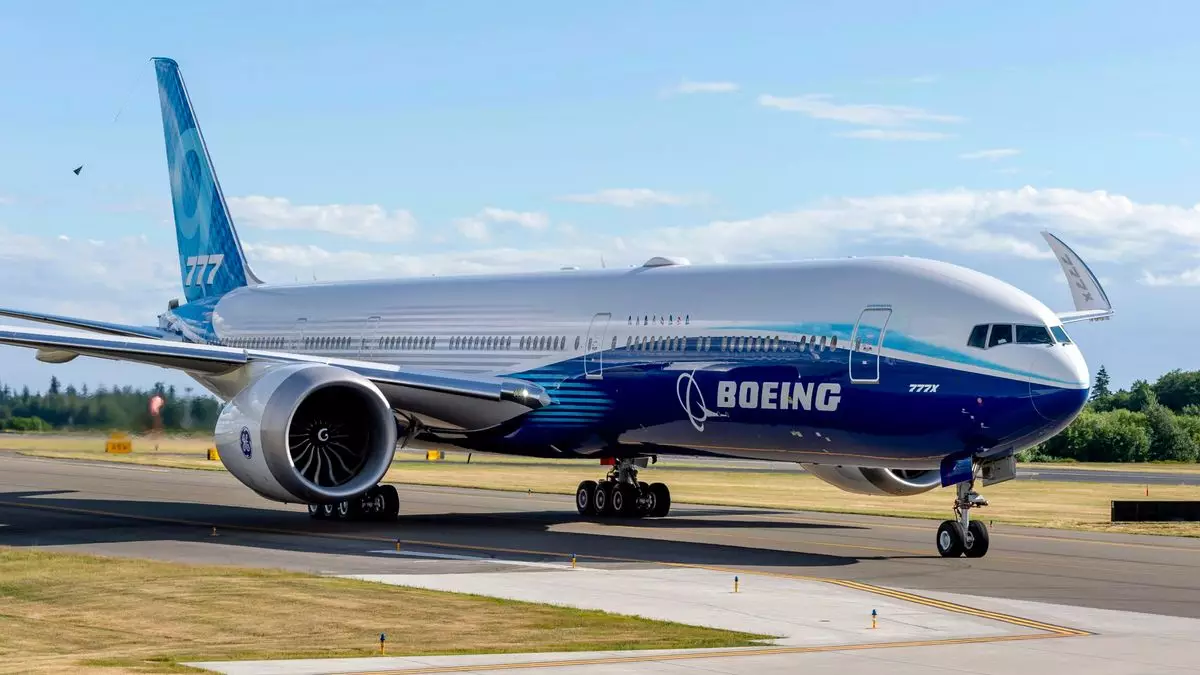Boeing, a titan in the aerospace industry, is navigating turbulent waters as it grapples with substantial financial losses and operational setbacks. With announcements of imminent layoffs affecting approximately 17,000 workers—about 10% of its global workforce—the company is under intense scrutiny from industry analysts, employees, and consumers alike. This article delves into the factors contributing to Boeing’s predicament, the implications of these layoffs, and the challenges facing its new CEO, Kelly Ortberg.
The decision to lay off a significant portion of its workforce signals a desperate attempt to stabilize the company’s finances. Boeing’s recent memo from Ortberg reflected a somber acknowledgment of the ongoing struggles that the company faces, including a protracted labor strike that has severely hampered manufacturing operations. By eliminating positions across various levels—including executives, managers, and production workers—Boeing aims to streamline its operations amid mounting financial pressures.
While the layoffs are substantial, they come on the heels of previously implemented temporary furloughs, emphasizing the precarious balance Boeing has tried to maintain as it navigates its operational challenges. These measures are indicative of a significant shift in corporate strategy as the company prepares to re-evaluate its workforce needs in light of diminished production capabilities.
Boeing’s financial health has been in freefall since 2019, with losses exceeding $25 billion. The recent announcement revealed a shocking cash burn of $1.3 billion within the third quarter alone. These figures highlight an urgent need for accountability and reform within the company. A closer examination of their financials reveals substantial write-downs linked to delays in several key projects, including the much-anticipated 777X and defense contracts.
The financial strain is compounded by the ongoing strike by approximately 33,000 union machinists, which has caused significant production halts, impacting the delivery of crucial aircraft to airline customers. In the current business model, effective cash flow relies heavily on the timely delivery of planes—a process that has been critically disrupted, forcing Boeing to adopt drastic measures to stem its financial bleeding.
Assuming the role of Boeing’s CEO amidst such chaos is an unenviable challenge for Kelly Ortberg. With a reputation as a seasoned aerospace executive, he is expected to turn the company’s fortunes around quickly. However, his strategy must address the myriad issues that have plagued Boeing in recent years, including increased scrutiny from regulators following safety incidents related to the 737 Max aircraft.
Ortberg’s predecessor failed to adequately address the concerns surrounding production safety and corporate transparency, leading to a corrosive atmosphere within the organization. As Boeing is now grappling with greater scrutiny from the Federal Aviation Administration (FAA), Ortberg’s ability to restore confidence in both the company’s capabilities and governance practices is paramount.
The implications of Boeing’s current turmoil extend beyond its internal affairs, affecting the wider aerospace industry. As one of the largest manufacturers of commercial airplanes globally, Boeing’s downfall could lead to cascading effects on suppliers, employment opportunities, and competitive dynamics within the sector. Moreover, if Boeing fails to stabilize quickly, rival companies may capitalize on its misfortunes, potentially altering market share for years to come.
Future prospects look bleak unless strategic and effective solutions are implemented. With an anticipated financial update set for release on October 23, stakeholders and analysts will be keenly watching to see how Boeing plans to navigate its immediate challenges and formulate a plan for sustainable growth moving forward.
Boeing’s situation is a cautionary tale of a corporate giant caught in a storm of its own making. The forthcoming layoffs, combined with financial woes and challenging negotiations with labor unions, underscore a pivotal moment in the company’s history. As Ortberg grapples with these profound challenges, the aerospace giant must adopt a revolutionary approach to navigate back to stability and regain its standing in the industry.


Leave a Reply